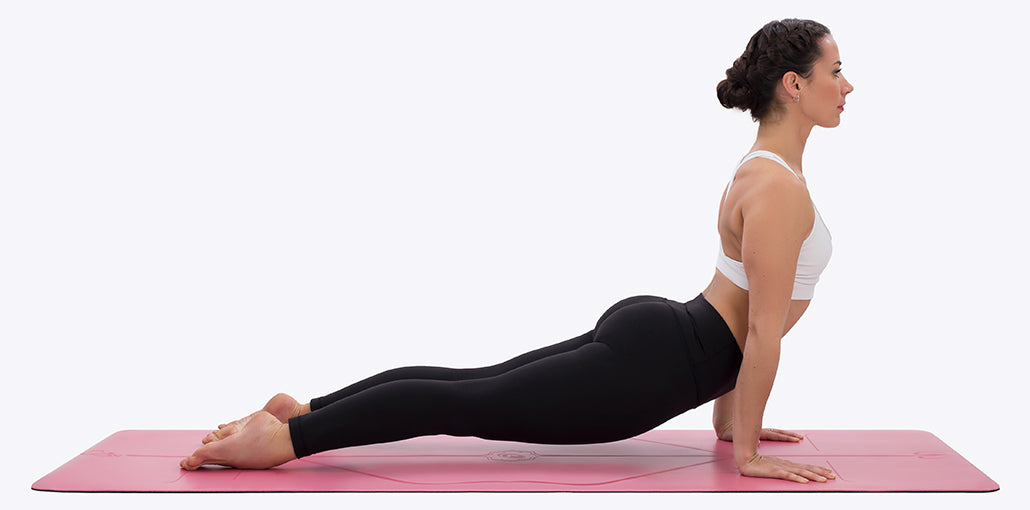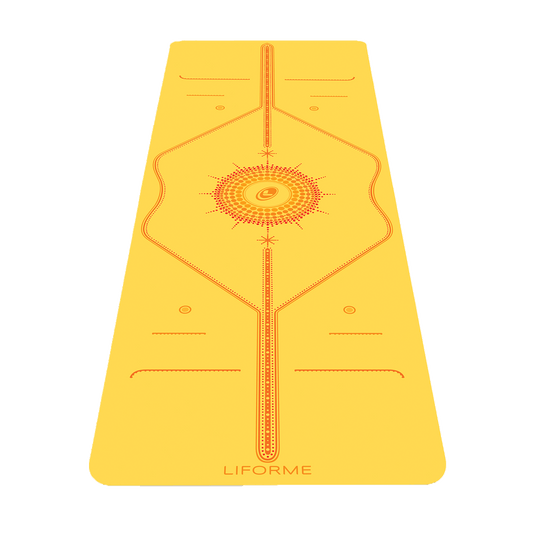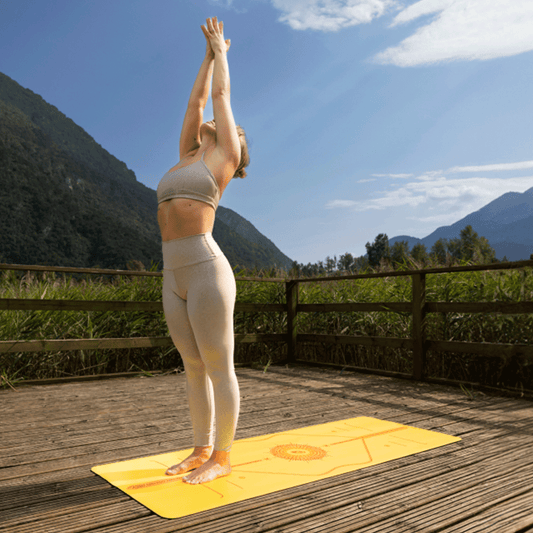In flow yoga practices, it’s easy to get caught up in the destination and forget about the journey. Vinyasa can unintentionally foster a goal-oriented mindset in which your attention goes to upcoming poses in a sequence long before you physically arrive there. This preoccupation with the next step has the effect of distracting you from the present moment as your mind gets ahead of your body.
It’s All in Your Mind
We tend to give primacy to the poses with names because they are often the places where we pause for a few breaths. During transitions, your attention may wander, causing you to lose focus. Try to adjust your perspective so that the movement from pose to pose becomes just as important as the stopping places. We can even change our approach to the postures that we think of as static so that they link the periods of motion instead of vice versa. (Whoa, trippy!)
Transitions in the Vinyasa Sequence
In flow classes, you go through the traditional vinyasa sequence of poses (Downward Facing Dog to Plank to Chaturanga to Upward Facing Dog to Downward Facing Dog) many times. That makes it easy to space out, rely on old habits, and disconnect from your body. Instead, try to bring your attention to every movement in this series. The transitions are particularly important here because they set up the good alignment that is necessary to do these tricky poses frequently over time with less risk of injury.
1. Begin in Downward Facing Dog.

2. Move to Plank
Initiate movement from your tailbone. On an inhalation, let the motion ripple up your spine as you round forward to a Plank position with your shoulders over your wrists. Notice if you have to scoot your feet back to make room for the full length of your body in Plank. If you do, it’s an indication that your Downward Dog is too short. File this information away for later.

3. Shift Forward
In Plank, your shoulders are over your wrists. Before you lower to Chaturanga Dandasana you need to position the shoulders slightly in front of the wrists, however. This set-up allows for your upper and lower arms to form the optimal right angle when you are in Low Plank. To this end, come up onto your tiptoes and shift your shoulders forward. Open your chest by anchoring your shoulder blades onto your back. Your gaze will naturally lift a little.

4. Lower to Chaturanga
On an exhalation, bend your elbows straight back, hugging your sides. Lower your chest but stop when your upper arms are parallel to the floor. Don’t go any lower. It’s fine to drop your knees to the mat or to keep your shoulders above the level of your elbows if that’s what works in your body. Pause for a moment in your Chaturanga. There’s a tendency to whip through the next transition. Take it slowly instead.

5. Lift to Upward Facing Dog
Inhale to roll or flip to the tops of your feet. Simultaneously, lift your chest by beginning to straighten your arms but don’t be in a hurry to get there. With your elbows bent, move your shoulders back and down away from your ears. It’s actually ok to keep your elbows slightly bent throughout your Upward Facing Dog if it allows you to keep your shoulders low and your chest open. Press into the tops of your feet and engage your leg muscles to keep your thighs lifted off the floor.

6. Move Back to Downward Facing Dog
Exhale and roll or flip the feet as you lift your hips back to a Downward Facing Dog. Remember if you had to adjust your feet to accommodate your plank earlier. If you did, resist the urge to step your feet forward now.

All images feature Yogini Emily Clare Hill, @emilyclareyoga, on a Liforme Yoga Mat.





































